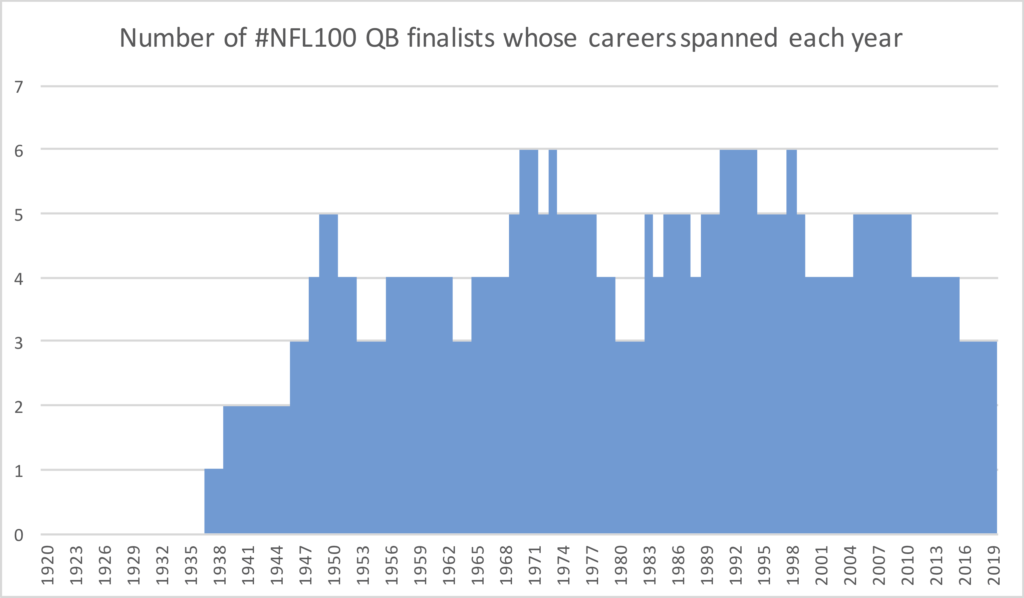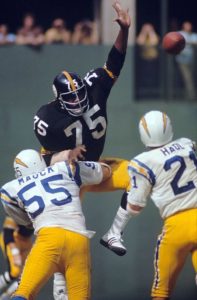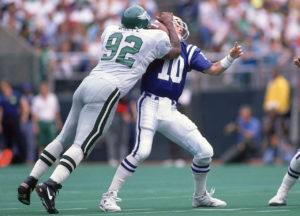Brad Oremland is a sportswriter and football historian. You can follow him on Twitter @bradoremland.
Yesterday, I began looking at the greatest dynasties in pro football history were represented on the NFL 100 team. Today, we pick back up with the top 13 dynasties.
t9. Decatur Staleys/Chicago Bears, 1920-27
73-17-16 (.811), 1 championship, 0 title appearances
20 dynasty points
NFL 100 Members: George Halas
Other HOFers: Ed Healey, George Trafton
Not a dynasty. They rate well by my system, but the system wasn’t designed for the 1920s. These were the first eight years of the NFL’s existence — actually in 1920 the league was called the APFA: American Professional Football Association. Teams not only played variable numbers of games, they regularly played against teams who weren’t even in the league. In 1921, the Louisville Brecks, Muncie Flyers, New York Brickley Giants, and Tonawanda Kardex combined to go 0-7, getting outscored by a total of 172-0.
Only four of the 12 NFL teams in 1927 were still in the league five years later. The Bears, Giants, and Packers combined to outscore their opponents 459-161 that season. In this environment, it was easy for real teams to pad their records, but the Bears only won one championship. Furthermore, ties weren’t counted towards winning percentage, so when the Bears went 6-1-4 in 1924, that counted as an .857 record, worth three dynasty points. I’m sorry, but there’s no way going 6-1-4, with two draws each against the Racine Legion and the Rock Island Independents, should earn as many dynasty points as the 2010 Patriots or the 2011 Packers.
I include this team for the sake of completeness, but subjectively, it wouldn’t make my top 30, to say nothing of tied for 9th.
t9. Green Bay Packers, 1936-43
65-19-3 (.774), 2 championships, 3 title appearances
20 dynasty points
NFL 100 Members: Curly Lambeau, Don Hutson
Other HOFers: Arnie Herber, Clarke Hinkle
Like the Joe Gibbs Dynasty in Washington, this team would actually benefit from a longer period than eight years: they were NFL champions in 1944. At a time when everyone played both offense and defense, the Packers had two great QBs (Cecil Isbell and Herber), a fullback who retired as the league’s all-time leading rusher (Hinkle), two very good linemen (Buckets Goldenberg and Bill Lee), a Hall of Fame coach (Lambeau), and Don Hutson.
Hutson was more than revolutionary; he was an anomaly. It is an understatement to say that he shattered records. Around the same time, Sammy Baugh redefined ideas about what passers could do, but Hutson was so outstanding that no one even thought to replicate what he was doing. In an 11-year career, he led the NFL in receptions eight times, in receiving yards seven times, and in receiving touchdowns nine times. He was also an excellent defensive player, with 30 interceptions in the six seasons the stat was kept. He led the league in 1940 and led in INT return yards in 1943. He was also a pretty good kicker, with nearly 200 extra points made. Like his contemporary Baugh, there’s a compelling argument that he is the greatest football player who ever lived.
Hinkle was an NFL 100 finalist as a linebacker. He was a terrific all-around player (#106) and a worthy NFL 100 finalist, but I don’t think there’s any single position at which he felt like he should be a finalist. I suppose linebacker was the best fit. [continue reading…]



